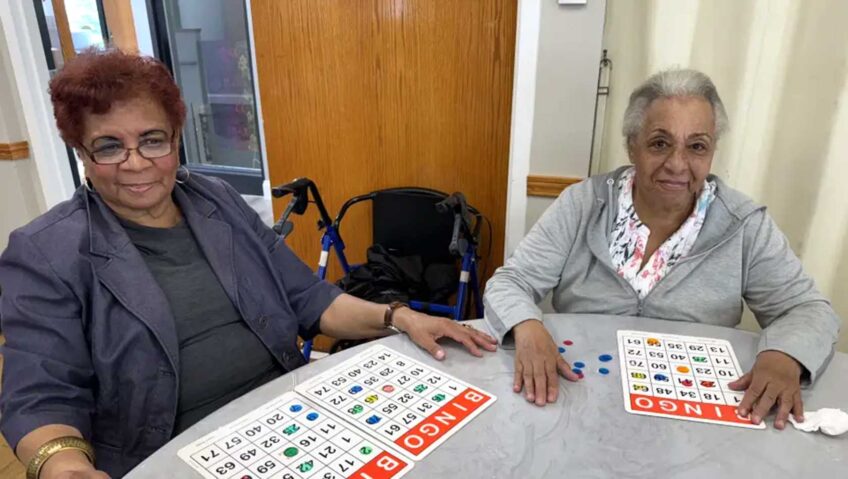Dr. Coppelius is an aging inventor living in a small town in a medieval world, and the only way he knows how to combat his loneliness is to use the powers of his craft to fashion a life-like doll. The doll is so real that it mesmerizes the young and handsome Franz, and the jealousy and vengeful curiosity aroused in his admirer Swanilda drives the story in “Coppelia.”
The light-hearted setting lends itself easily to comedy and mime, and the thorough engagement of the Opera House’s evening crowd on May 18 testified to the Boston Ballet’s growing prowess at training its dancers to also be good actors.
Ballet has its own “sign language” — specific arm and hand gestures which translate to literal expressions, such as “let’s dance.” Most audience members will have no idea how to interpret the beautiful yet strange and often vague gesticulations when dancers “speak” to each other this way. Only hardcore ballet fans, dancers or dance historians will have a clue what the characters are saying, and this can often be alienating for those outside the know.
This latest production was leaps and bounds ahead of its 2010 debut in bridging the gap between the “high art” world of physical finesse and the audience. No translation was needed for much of the physical dialogue; Boston Ballet’s directors and choreographers have greatly improved their dancers in the art of communication. In some places, the gesturing was too emphatic and the meaning was lost, or lacked backstory, but overall, the audience was very much entertained.
The first and second acts are rich with story and follow the young, adventurous Swanilda and Franz as they each find their own way into Dr. Coppelius’ laboratory-workshop in pursuit of the mystery of the doll. The ballet is historic for being the first to incorporate folk dance into its routines, and it is this idyllic folk dancing in the first act that helps cast the world of “Coppelia” into a realm without suffering, poverty or class warfare. The feather-light movements of Swanilda’s friends, who all dance together after the folk ensemble, speak to this carefree world of purity and innocence.
Dr. Coppelius, played in the evenings by Boyko Dossev, brought the show to life. The audience, by the second act, knows that the heroine and the doll have swapped places, and that Dr. Coppelius is not, as the story goes, a “wizard,” but simply a man who wants to (and does) believe that he has power — the power to create a living companion and ultimately end his own unhappiness. Dossev played to this with extreme effect. He filled out the role perfectly.
If a good ballet is defined purely by its dancing, its beautiful positions, costumes and color harmonies, then “Coppelia” shines in the third act, which all but treads on Coppelius. His story ends in a farcical, abject way — an insult to careful, studied character work in the previous acts — and quickly lays the story to rest in favor of George Balanchine’s much-revered choreography, which can be described as “painting with ballet.” The third act features a panoply of beautifully-costumed female leads, flocks of child dancers as skilled as they are utterly adorable and a non-sequitur appearance of a spear-wielding clan of armor-clad dancers.
The art of Balanchine was clearly present with all the costuming, beautiful formations, gentle, stylized poses and colors. According to the playbill, he was also responsible for the addition of “male solos, pas de deux and a [revised] third act.” The ballet ends with entertaining finales by Franz and Swanilda, danced with utter virtuosity.
“Coppelia” is, without a doubt, entertaining: It has both good acting and powerful, fleet-footed soloists, but the emotional expectations left by a lack of a properly fleshed-out ending to the story are not compensated by the sensual aesthetics of the “pure dance” that follows. It is ridiculous to think that a man who emotionally invests in his lifelike creations would be placated by a bag of money given to him by the town mayor for compensation of damages incurred by the kids. In some versions of the story, Swanilda’s mother takes pity on Coppelius and marries him; he subsequently abandons his dolls and therefore is allowed to rejoin society and rediscover his humanity.
The story of “Coppelia” should be developed and completed if it is to significantly engage audiences. Most ballets are colored by small risks. It’s time for bigger risks if it is to stay artistically relevant aside from its historical milestones.
Boston Ballet has proven it is capable of inventing and perpetuating modern ballets rich with symbolism and the avant-garde. The company has sufficient vision to reinvent and complete the world of “Coppelia.” Let the great minds begin to answer questions such as “Why does Dr. Coppelius feel lonely?” and perhaps they can take a page from his spellbook to breathe new spirit into the lifelike body of “Coppelia.”






